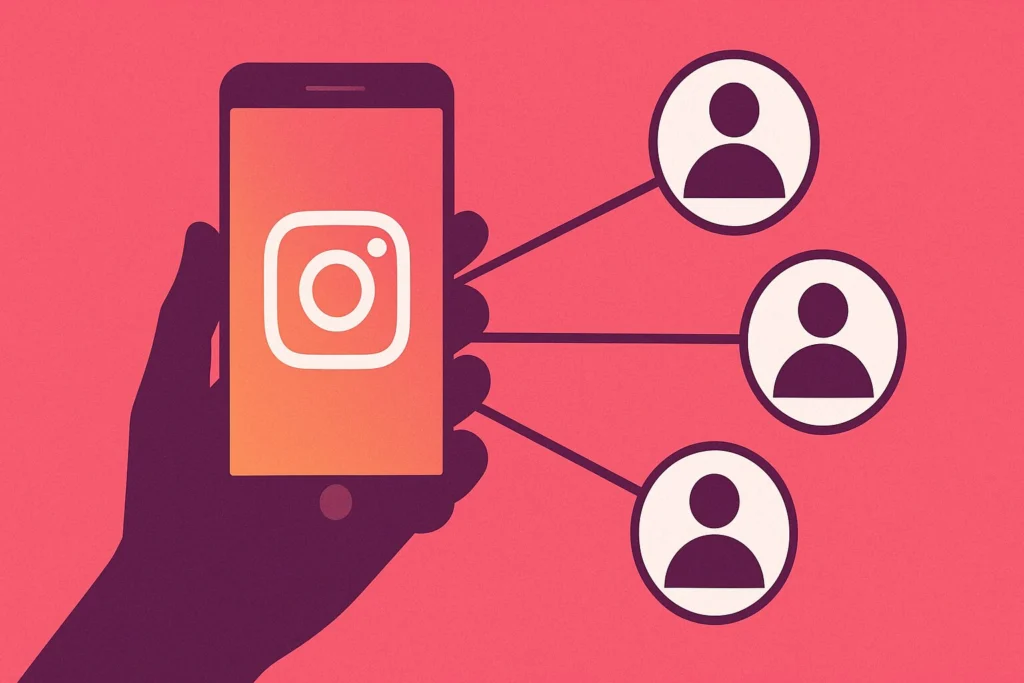Brands benefit from micro-influencer engagement strategies as these influencers boast an average engagement rate of 5%, noticeably higher than macro-influencers. Their authenticity and niche audience appeal result in 82% of consumers trusting their recommendations. Micro-influencers engage their followers 22.2 times more than typical users, fostering intimate and authentic connections. This strategy is not only cost-effective, with collaborations often under $300 per post, but it also targets niche communities more effectively, enhancing brand relevance and driving conversions. Employing strategic collaborations with micro-influencers positions brands to harness powerful engagement and build meaningful consumer relationships. Explore the potential further.
Key Takeaways
- Micro-influencers achieve higher engagement rates, often exceeding 5%, compared to larger influencers’ 1-3%.
- They connect with niche communities, enhancing brand relevance and fostering consumer trust.
- Partnerships with micro-influencers are cost-effective, often ranging from $100 to $300 per post.
- Authentic content from micro-influencers strengthens brand credibility and long-term relationships.
- Micro-influencers facilitate 22.2 times more conversations than regular users, boosting brand awareness.
Understanding Micro-Influencers
Micro-influencers, individuals with a social media following ranging from 1,000 to 100,000, have emerged as pivotal players in the digital marketing landscape due to their ability to engage with niche audiences effectively. Their engagement rates, often exceeding 5%, considerably surpass those of larger influencers, whose rates typically fall between 1-3%. This heightened engagement is attributed to the authenticity and trustworthiness micro-influencers convey within specific niche markets, which enhances their credibility and the subsequent impact of their recommendations on consumer behavior.
The strategic advantage of collaborating with micro-influencers lies in their capacity to foster brand awareness through authentic content creation. Unlike larger influencers, who may cater to broader audiences, micro-influencers connect deeply with their followers by sharing content driven by personal passions and expertise. This approach not only resonates with audiences but also renders their posts relatable, thereby maximizing engagement.
Moreover, research indicates that 82% of consumers are more inclined to trust recommendations from micro-influencers, underscoring their influence on purchasing decisions. For brands, leveraging the authenticity and specialized reach of micro-influencers can be a powerful tactic in cultivating brand awareness and driving consumer engagement within targeted markets.
Maximizing Engagement Rates
Leveraging micro-influencers effectively can greatly enhance a brand’s engagement rates, a demonstration of their powerful role in digital marketing strategies.
With an average engagement rate of 5%, micro-influencers surpass the typical 1-3% seen with larger influencers, creating a more dynamic interaction landscape. The authenticity of their content fuels consumer trust, evidenced by 82% of consumers more likely to follow their recommendations. This authenticity is essential in marketing strategies, fostering not only audience engagement but also brand loyalty.
Brands that strategically engage with micro-influencers can achieve up to 60% higher engagement rates compared to macro-influencers. This increase is not merely a statistical advantage; it translates into stronger relationships and meaningful interactions between influencers and their audiences.
A creative approach involving multiple micro-influencers can yield exponential results, as engaging with 10 micro-influencers can outperform a single macro-influencer. This is due to their cumulative effect, which amplifies brand visibility and sparks 22.2 times more conversations than regular users.
Targeting Niche Communities
Targeting niche communities through micro-influencers allows brands to leverage shared interests, tapping into the 82% of consumers who trust these influencers’ recommendations more than traditional advertising.
By cultivating authentic connections with micro-influencers who have expertise in specific areas, brands can greatly enhance their relevance and credibility within targeted demographics.
This strategic approach not only fosters deeper engagement but also drives higher conversion rates by aligning with passionate and loyal follower bases.
Leveraging Shared Interests
A substantial number of brands are increasingly recognizing the power of targeting niche communities by leveraging shared interests through strategic partnerships with micro-influencers.
These influencers excel in cultivating followings based on shared passions and interests, enabling brands to access highly targeted niche communities. This specificity allows for the delivery of tailored messaging that resonates deeply, thereby enhancing brand relevance within these groups.
Data indicates that followers often perceive micro-influencers as credible experts within their fields, fostering an environment of trust and authenticity.
Such trust is vital, as it greatly amplifies the impact of a brand’s message. According to research, 82% of consumers are more inclined to trust recommendations from micro-influencers in niche markets, leading to higher conversion rates.
This trust translates into increased consumer engagement and loyalty, essential components of a successful brand strategy.
Cultivating Authentic Connections
Authenticity serves as the cornerstone in cultivating meaningful connections within niche communities, especially through the strategic use of micro-influencers. These content creators have honed their ability to engage with targeted audiences, building trust through shared interests and expertise.
Brands seeking to boost engagement rates and forge authentic connections can leverage micro-influencers as pivotal intermediaries. By doing so, they tap into communities where their products resonate profoundly, aligning brand messaging with the intrinsic values of their target audience.
Micro-influencers are deemed trustworthy by 82% of consumers, considerably more than larger influencers. This trust translates into higher engagement rates, as followers perceive micro-influencers’ endorsements as genuine and reflective of personal experience.
Consequently, micro-influencers facilitate 22.2 times more conversations than typical users, fostering vibrant discussions and strengthening community ties. Brands benefit from this dynamic by deepening brand relevance in these microcosms, fostering loyalty and resonance.
Strategically engaging micro-influencers allows brands to integrate seamlessly into niche communities, where they become part of a dialogue rather than an external voice.
Enhancing Brand Relevance
Within the intricate landscape of digital marketing, enhancing brand relevance through micro-influencers relies on effectively targeting niche communities that align with specific product or service offerings.
Micro-influencers, with their cultivated followings based on shared interests, present brands with a unique opportunity to engage a specific target audience. These influencers are seen as experts within their fields, thereby lending higher trust and credibility to the brands they endorse.
Data indicates that recommendations from micro-influencers notably impact consumer behavior, with 82% of consumers influenced by their endorsements. This influence translates into higher engagement rates and increased purchase intent, as audiences are more likely to resonate with content that aligns with their interests.
For brands, this means that tapping into these niche communities can enhance brand relevance, as the tailored messaging connects on a deeper emotional level.
Strategically collaborating with micro-influencers allows brands to deliver content that resonates, fostering emotional connections and driving consumer actions.
Cost-Effective Marketing
How can brands maximize their marketing budgets while achieving considerable impact? The answer lies in embracing micro-influencers as a cost-effective strategy.
Brands looking to optimize their spending will find the lower fees of micro-influencers, typically between $100 to $300 per post, considerably more appealing compared to their larger counterparts. This allows for strategic resource allocation while still achieving higher engagement rates, averaging around 5%, which often translates into better conversion rates and a higher return on investment.
- Affordable Partnerships: Micro-influencers provide a budget-friendly option, enabling brands to engage with multiple influencers simultaneously without a hefty financial burden.
- Broad Reach: Collaborating with several micro-influencers expands the brand’s reach, creating a ripple effect without proportionally increasing costs.
- Flexible Compensation: Many micro-influencers are open to product exchange or other non-monetary compensations, further reducing expenses while generating authentic content.
- Enhanced ROI: The high engagement rates of micro-influencers contribute to better conversion rates, ensuring that marketing dollars are spent effectively.
Building Authentic Trust
Leveraging the cost-effectiveness of micro-influencers not only optimizes marketing budgets but also paves the way for building authentic trust with consumers. Research indicates that 82% of consumers perceive micro-influencers as authentic and trustworthy, strongly influencing their purchasing decisions. This perception is largely driven by the genuine content they produce, which resonates with audiences who prioritize authenticity in marketing.
Micro-influencers excel in fostering deep connections due to their higher engagement rates, averaging around 5%, compared to the 1-3% typically seen with larger influencers. These heightened engagement rates enable more meaningful interactions, allowing micro-influencers to cultivate niche communities that share common interests.
Through this community-building, micro-influencers enhance brand loyalty by aligning themselves with the values and lifestyles of their audiences, thereby reinforcing trust.
Additionally, 60% of consumers report making purchases based on micro-influencer endorsements. This statistic underscores the power of genuine recommendations, which are perceived as credible advice rather than traditional advertising.
For brands, partnering with micro-influencers means tapping into these trusted networks, where authentic storytelling can seamlessly integrate brand messages, ultimately strengthening brand credibility and fostering long-term consumer relationships.
Finding the Right Influencers
Identifying the right micro-influencers is a strategic endeavor that requires a well-defined approach to maximize marketing impact. The process begins by establishing clear campaign goals and crafting a detailed target audience profile that aligns with brand values.
Micro-influencers offer authentic connections, making their engagement levels essential to a campaign’s success. To streamline the process of finding the right influencers, brands can utilize discovery tools like AspireIQ, Upfluence, and Heepsy, which allow for precise evaluation based on specific criteria.
Content quality is a significant aspect to contemplate. Brands should meticulously assess the visual aesthetics, originality, relevance, and storytelling abilities of potential micro-influencers.
Authenticity, a cornerstone of successful partnerships, can be gauged by comparing follower counts and engagement rates using tools such as HypeAuditor and Social Blade. This guarantees that the chosen influencer resonates genuinely with the target audience.
To evoke deeper emotional connections, reflect on the following:
- Imagine the excitement of discovering an influencer who truly embodies your brand values.
- Feel the satisfaction of achieving campaign goals with authentic engagement.
- Visualize the impact of aligning with influencers who captivate your audience.
- Experience the authenticity that enhances your brand’s presence.
Engaging in internet research and hashtag exploration can further uncover micro-influencers actively participating in niche communities, enhancing campaign reach.
Crafting Strategic Campaigns
In crafting strategic campaigns, it is essential to align micro-influencer efforts with overarching brand objectives, focusing on measurable goals such as awareness, engagement, or sales to guarantee impactful outcomes.
Leveraging the authentic content produced by micro-influencers not only enhances relatability but also fosters genuine connections with target audiences, driving higher engagement rates.
Aligning Brand Objectives
Crafting strategic campaigns that align micro-influencer efforts with brand objectives is essential for maximizing marketing impact and achieving specific goals. By integrating micro-influencers into the core of brand strategies, companies can guarantee that their marketing efforts resonate with target audiences. This alignment enhances engagement rates and effectively communicates brand messaging.
Micro-influencers, with their niche expertise, enable brands to tailor messaging that appeals directly to specific demographics, resulting in improved conversion rates.
To achieve this alignment, brands should consider the following:
- Define Clear Objectives: Establish specific goals such as increasing brand awareness or driving sales, ensuring that micro-influencer efforts align with these objectives.
- Select the Right Influencers: Utilize data analytics to identify micro-influencers whose values and audience demographics match the brand’s target audiences. This strategic selection maximizes return on investment.
- Establish Measurable Goals: Set performance metrics to assess the success of micro-influencer campaigns. This enables brands to refine strategies based on actual data, enhancing marketing effectiveness.
- Encourage Creative Collaboration: While aligning with brand messaging, allow micro-influencers creative freedom. This fosters authenticity, building trust and engagement with their dedicated follower base.
Leveraging Authentic Content
The power of authentic content cannot be overstated in today’s digital marketing landscape, where discerning consumers are increasingly drawn to genuine and relatable messaging. Micro-influencers, adept at crafting authentic content, engage their niche audiences with a 60% higher engagement rate than their macro counterparts (Forbes, 2021). This highlights the strategic advantage for brands in aligning with micro-influencers who share their values and interests, ensuring the brand’s message is conveyed in a manner that feels genuine and trustworthy.
Data underscores the significance of genuine content, with 89% of consumers prioritizing authenticity in marketing efforts. By leveraging the creative freedom of micro-influencers, brands can drive engagement and conversions through content that is both personal and compelling. Such campaigns resonate with audiences, as they reflect the influencers’ personal experiences and storytelling prowess.
Moreover, fostering long-term partnerships with micro-influencers can lead to consistent messaging and authentic endorsements. These relationships enhance brand credibility and awareness within targeted communities, solidifying the brand’s presence.
In crafting strategic campaigns, brands must prioritize authentic content creation through micro-influencers, ensuring sustained engagement and meaningful connections with their audience.
Best Practices for Collaboration
When initiating collaboration with micro-influencers, personalized engagement is essential to establishing a productive partnership. Crafting messages that specifically acknowledge a micro-influencer’s unique content style and audience can greatly boost response rates and foster a sense of brand loyalty.
By collaborating with micro-influencers as brand ambassadors, brands can tap into high engagement levels and connect more authentically with their target audience. To maximize these benefits, consider the following best practices for collaboration:
- Clear Brand Messaging: Clearly outline your brand’s mission, values, and collaboration goals. This guarantees alignment from the outset and helps micro-influencers create content that resonates with the brand’s core message.
- Long-term Partnerships: Develop ongoing relationships to leverage micro-influencers’ evolving audiences. This strategy enables consistent messaging and authentic endorsements, effectively weaving the brand into the influencer’s narrative.
- Creative Freedom with Guidelines: Allow micro-influencers the creative freedom to produce authentic content, yet make sure it aligns with brand guidelines. This balance encourages genuine integration and results in more engaging content for the audience.
- Transparency and Compliance: Maintain trust by clearly disclosing paid partnerships and adhering to advertising regulations. This transparency is vital for sustaining credibility with both the influencer and their audience.
Frequently Asked Questions
Why Might a Brand Want to Work With a Micro Influencer?
Brands may collaborate with micro-influencers to leverage their authentic connections and niche audiences, achieving targeted reach. This cost-effective strategy enhances community trust and fosters brand loyalty by delivering relatable content that resonates with specific consumer segments.
Why Is a Micro Influencer Important?
Micro-influencers are important due to their ability to foster authentic connections with niche audiences, leveraging community trust to provide cost-effective solutions. Their targeted reach guarantees brand alignment, enhancing engagement and driving strategic, data-driven marketing success through creative collaborations.
Why Do Brands Need Influencer Marketing?
Brands leverage influencer marketing to enhance brand awareness, effectively reach target audiences, and build trust. Through strategic content creation, influencers provide social proof, fostering customer loyalty. This data-driven approach creatively strengthens relationships and boosts brand positioning.
What Is a Good Engagement Rate for a Micro Influencer?
A good engagement rate for a micro-influencer is typically between 5% to 7%. This metric reflects audience authenticity and content resonance, driven by niche targeting, relationship building, and brand alignment, enhancing strategic outreach effectiveness.
Conclusion
The integration of micro-influencer engagement strategies presents a compelling opportunity for brands to enhance their marketing efforts. By leveraging the unique advantages of micro-influencers, such as high engagement rates and access to niche communities, brands can achieve cost-effective outreach while cultivating authentic trust. Selecting suitable influencers and crafting strategic campaigns remain critical for optimizing outcomes. Adhering to best practices in collaboration further guarantees sustainable and impactful partnerships, ultimately driving brand success in a competitive digital landscape.




